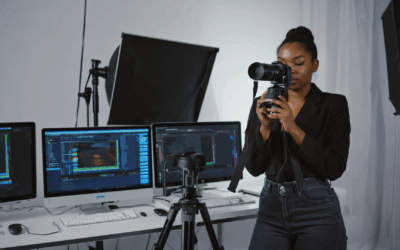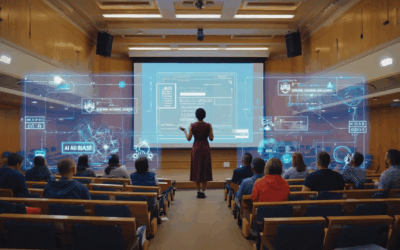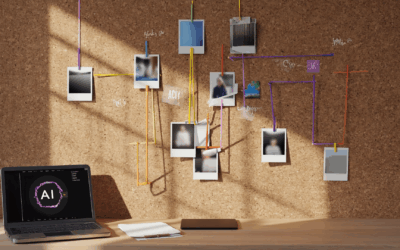Photography has always been a way to capture and preserve our most cherished memories. With the rapid advances in technology, the field of photography is undergoing significant transformations. One of the most exciting areas of development is the integration of artificial intelligence (AI) into photography products. This article will explore how AI photography products are revolutionizing the way we capture moments, and how companies like Wim Arys Photography are leading the charge in this exciting frontier. These innovations are not just about enhancing image quality but also about automating tedious processes, allowing photographers to focus on their creative vision. As we delve deeper into ai photography innovations for the future, it becomes clear that this technology will empower both amateur and professional photographers alike, fostering a new wave of creative expression. The potential to create stunning visuals with minimal effort is transforming the entire photography landscape. As we explore the impact of AI on photography, we can see that it not only enhances technical capabilities but also democratizes the art form, making it accessible to a wider audience. With AI tools that streamline editing and optimize compositions, even those without extensive training can produce professional-quality images. This shift is fostering a collaborative environment where human creativity and machine intelligence work hand in hand to push the boundaries of visual storytelling. The rise of smart camera technology advancements further complements these AI-driven innovations, enabling devices to automatically adjust settings for optimal results based on the shooting environment. This synergy between AI and smart cameras minimizes the learning curve for budding photographers, allowing them to capture stunning images effortlessly. As these technologies continue to evolve, the possibilities for creative exploration in photography will expand exponentially. Moreover, the impact of AI on photography goes beyond technical enhancements; it also influences how we perceive and interact with images. As AI tools become more integrated into everyday photography, the distinction between professional and amateur work is increasingly blurred, leading to an exciting democratization of visual art. This transformation invites a broader range of voices to contribute their unique perspectives, enriching the photographic landscape with diverse stories and styles. Embracing artificial intelligence in photography not only enhances the quality of images but also encourages innovation in storytelling techniques. As photographers harness the power of AI to transform their workflow, they can explore new genres and styles that were previously difficult to achieve. This evolution paves the way for a collaborative community where technology and artistry merge, ultimately leading to a richer and more inclusive photographic narrative. As we witness the proliferation of AI cameras for amateur photographers, these tools are empowering users to experiment and push their creative boundaries without the intimidation of technical complexity. By making high-quality photography more accessible, these innovations inspire a new generation of storytellers who can capture their unique experiences and perspectives through compelling visuals. Ultimately, this shift not only enriches individual expression but also enhances the collective narrative of our times.
Table of Contents
What is AI and its Applications in Photography
Artificial Intelligence (AI) is a rapidly evolving field of computer science that focuses on creating machines capable of reasoning, learning, and problem-solving. In photography, AI is used to enhance the image capturing process, automate post-processing tasks, and improve the overall image quality. AI-driven algorithms can analyze and learn from vast datasets, allowing them to recognize and predict patterns that humans cannot easily detect.
AI offers several practical applications related to photography, which include:
- Image recognition and tagging: Automatically identifying and categorizing objects within images.
- Face detection and recognition: Identifying and tracking faces in a frame, making adjustments to optimize portrait photography.
- Optimizing camera settings: AI can analyze a scene and adjust camera settings such as ISO, shutter speed, and aperture to capture the best possible image under any lighting condition.
- Image enhancement: Applying post-processing techniques to improve image quality, such as noise reduction, color correction, and sharpening.
AI Integrated Cameras
AI integrated cameras incorporate AI algorithms either in their hardware or firmware to provide advanced features and improvements over conventional cameras. These cameras utilize AI to enhance the user experience and generate better final images.
AI Camera Features
AI-powered cameras come with a wide range of features designed to enhance photography, such as:
- Scene detection: Automatically recognizing the subject and environment to optimize camera settings.
- Portrait mode: Using AI processing to separate the subject from the background, creating professional-looking portraits with blurred backgrounds.
- Smart HDR: Capturing multiple exposures and using AI to combine them into a single, optimally exposed image.
- Low-light performance: Improving image quality in low-light situations by using AI algorithms to reduce noise and enhance details.
- Automatic image retouching: Enhancing overall image quality by applying AI-based post-processing adjustments.
Top Brands and Models
Several notable camera manufacturers have embraced AI technology to improve their cameras’ performance. Some popular AI integrated camera models include:
- Sony A7 IV: A full-frame mirrorless camera featuring AI-powered autofocus, real-time tracking, and Eye AF.
- Canon EOS R5: A full-frame mirrorless camera with AI-driven face and eye detection autofocus, deep learning algorithms for animal tracking, and in-camera RAW image processing.
- Nikon Z9: A professional full-frame mirrorless camera, utilizing AI algorithms for autofocus tracking and subject acquisition, as well as automated, in-camera shadow and highlight adjustment.
- Fujifilm GFX100S: A medium format camera that uses AI algorithms to optimize autofocus performance, making it quicker and more accurate.
AI-powered Photography Software
AI-driven algorithms are increasingly being used in photography software, allowing photographers to enhance and optimize their images with ease. Some popular AI-powered software options include: These tools offer features such as automatic image adjustments, advanced noise reduction, and intelligent cropping suggestions. As a result, ai in photography advancements are streamlining workflows and enabling both amateur and professional photographers to achieve stunning results with minimal effort. This integration of AI not only saves time but also inspires creativity by providing innovative ways to enhance visual storytelling.
- Adobe Photoshop and Lightroom: These photo editing applications integrate AI technologies, such as Adobe Sensei, to provide advanced image processing, automation, and enhancement features.
- Topaz Labs: A suite of AI-powered photo editing plugins that includes DeNoise AI, Sharpen AI, and Gigapixel AI, designed to enhance image quality and detail.
- Luminar AI: A dedicated photo editor that leverages AI to streamline and automate the image editing process, offering AI-powered sky replacement, object removal, and facial retouching tools.
Challenges Faced by AI Photography
Despite the numerous potential benefits of AI-driven photography, there are some challenges and concerns that persist in this field: One major concern is the risk of over-reliance on technology, which can lead to a loss of traditional photography skills and artistic intuition. Additionally, ethical implications around copyright and originality arise as AI in photography techniques can generate images that closely mimic human-created works, blurring the line between authentic art and machine-generated output. As the industry evolves, it is crucial to address these challenges to ensure a balanced integration of AI in creative processes. Furthermore, embracing AI in photography should be coupled with education and awareness, helping photographers to harness these tools while preserving their unique artistic voice. It is essential for practitioners to find a harmonious relationship between technology and creativity, ensuring that AI complements rather than replaces human skill. By fostering dialogue around these issues, the photography community can navigate the evolving landscape responsibly and innovatively.
- Privacy concerns: The use of AI technology for facial recognition and image tagging raises privacy concerns for many individuals.
- Artistic authenticity: Some critics argue that AI-driven photography risks compromising a photographer’s creative vision, pushing the artform towards conforming to predictable “ideal” images generated by algorithms.
- Over-processing: In some cases, AI algorithms can result in over-processed and unnatural-looking images, particularly when handled improperly or executed without care.
- Hardware and software compatibility: As AI technology continues to advance rapidly, there may be issues with backward compatibility and fragmentation between hardware and software, potentially limiting innovation and adoption.
The Future of AI Photography
The possibilities for the future of AI-driven photography are immense, with potential applications and advancements that include: Enhanced creativity through AI editing tools for photography will allow artists and photographers to experiment with styles and techniques previously unattainable. Moreover, the integration of machine learning can lead to real-time adjustments in lighting and composition, elevating the quality of images instantly. As these technologies evolve, the accessibility of professional-grade photography will democratize the field, empowering enthusiasts and professionals alike. Additionally, the rise of AI in photography industry advancements is set to transform how images are captured and shared, with algorithms capable of analyzing and understanding complex visual elements. This breakthrough will not only enhance photo quality but also streamline workflows, allowing photographers to focus more on their artistic vision rather than technical constraints. As a result, a new generation of creators will emerge, harnessing these tools to push the boundaries of visual storytelling. The ai in photography transformation will also foster collaboration between human creativity and machine intelligence, leading to innovative partnerships that redefine artistic expression. As photographers leverage these cutting-edge tools, they will be able to create more immersive experiences for their audiences, bridging the gap between traditional methods and revolutionary techniques. Ultimately, this synergy will not only elevate the art form but also encourage new narratives that resonate with diverse audiences across various platforms.
- Greater computational power and efficiency, enabling photographers to process and store high-resolution images quickly and easily.
- Further integration of AI technologies into the full spectrum of photography tools, from camera hardware to editing software, creating better synergy and streamlined workflows.
- Advancements in AI-based image recognition and synthesis, opening doors to new creative possibilities, such as automatically generated or enhanced digital environments and models.
- Increased accuracy and precision of AI-based algorithms, leading to improved image quality and reduction of unwanted artifacts and noise.
Conclusion
AI-powered photography products are rapidly transforming the way we capture and process images, offering new possibilities and capabilities for photographers of all abilities. Cameras with integrated AI algorithms and AI-driven photography software are becoming increasingly available, enabling artists to produce stunning, high-quality images with relative ease. While there are potential challenges and concerns, the future of AI photography looks bright and full of possibilities. Company’s like Wim Arys Photography plays a crucial role in informing and educating photographers about the latest advancements and innovations in this field. As photographers embrace these advancements, they also seek guidance on the best tools available. Resources such as ai photography product reviews provide valuable insights, helping users make informed decisions about which products to invest in. By staying updated and sharing experiences, the photography community can collectively navigate the evolving landscape of AI technology. As photographers explore these AI breakthroughs in photography, they unlock a wealth of creative opportunities that were previously unimaginable. Collaborations between technologists and artists are fostering innovative projects that push the boundaries of visual storytelling. This synergy not only enhances the artistic process but also inspires the next generation of photographers to experiment with emerging technologies and redefine the craft.




0 Comments